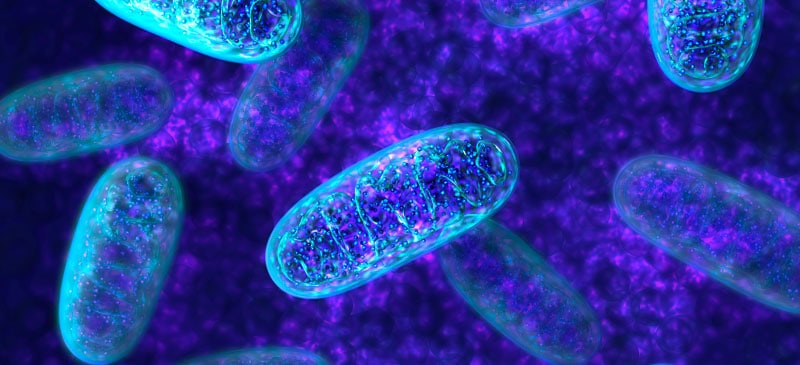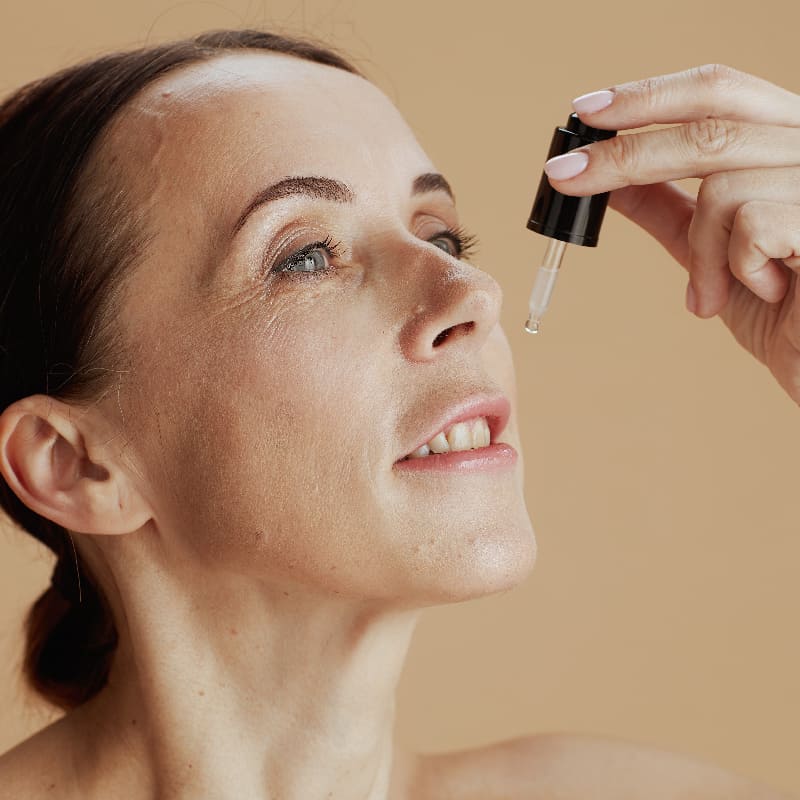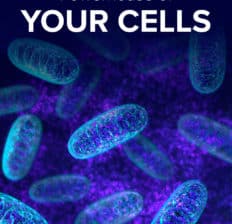This Dr. Axe content is medically reviewed or fact checked to ensure factually accurate information.
With strict editorial sourcing guidelines, we only link to academic research institutions, reputable media sites and, when research is available, medically peer-reviewed studies. Note that the numbers in parentheses (1, 2, etc.) are clickable links to these studies.
The information in our articles is NOT intended to replace a one-on-one relationship with a qualified health care professional and is not intended as medical advice.
This article is based on scientific evidence, written by experts and fact checked by our trained editorial staff. Note that the numbers in parentheses (1, 2, etc.) are clickable links to medically peer-reviewed studies.
Our team includes licensed nutritionists and dietitians, certified health education specialists, as well as certified strength and conditioning specialists, personal trainers and corrective exercise specialists. Our team aims to be not only thorough with its research, but also objective and unbiased.
The information in our articles is NOT intended to replace a one-on-one relationship with a qualified health care professional and is not intended as medical advice.
Mitochondria: 10 Ways to Boost the Powerhouse of Your Cells
February 20, 2024

What are mitochondria, and how do they help us? Mitochondria are specialized structures found in cells. They participate in many cellular processes, but their most important function is to extract the energy that is stored in the chemical bonds of nutrients (in the form of electrically charged particles called electrons) and transform it into a form of energy that cells can use to power their activity.
This form of energy is a molecule called ATP (from adenosine triphosphate), and the process is called cellular respiration. Because mitochondria generate around 90 percent of all ATP produced in the body, they are known as “the powerhouse of the cell.”
When mitochondria work optimally, cells are fueled efficiently, and biological pathways run smoothly. But when mitochondria are dysfunctional, they start to accumulate damage, and cellular processes start to gradually get disrupted.
Mitochondrial dysfunction caused by damage accumulation is actually one of the hallmarks of aging.
Why Is It Important to Boost Mitochondria?
Dysfunctions in the mechanisms of ATP production in our mitochondria, particularly in a pathway called the electron transport chain, increase the production of byproducts called reactive oxygen species (ROS) that can be damaging to mitochondria at high concentrations. Mitochondrial dysfunction creates a rolling snowball of damage that can gradually grow to affect all biological processes in our body.
This happens naturally with age, but improving mitochondrial fitness, their efficacy in generating energy, and their capacity to avoid or repair damage to their biochemical machinery may contribute to a healthier aging process.
10 Ways You Can Boost Mitochondria
1. Calorie Restriction
Reducing calorie intake (through fasting diets, for example) is the most successful approach to enhance longevity. This success can be attributed, at least partially, to an increase in mitochondrial bioenergetic efficiency.
Calorie restriction acts as a stress signal that triggers a number of adaptations in mitochondria:
- It improves the activity of the electron transport chain and regulates the production of ROS and oxidative stress.
- It supports mitochondrial quality control mechanisms, responsible for preventing and/or repairing damage.
- It promotes the renewal of the mitochondrial network through the elimination of damaged mitochondria (autophagy) and the production of new mitochondria (biogenesis).
2. Exercise
Exercise requires a great deal of energy to power our muscles. That puts a burden on muscle mitochondria, which signal that energetic demand to the rest of the cell.
Muscle cells respond by producing more mitochondria and more mitochondrial enzymes. This increases the respiratory capacity of muscles, i.e., their ability to produce ATP from nutrients to power muscle contraction.
It is an adaptation of our muscle cells to exercise and one of the reasons why exercise performance improves with training. Exercise is also one of the best ways to improve mitochondrial biogenesis and function in aging muscle, helping delay the age-related decline in mitochondrial activity and muscle health.
3. Mitochondrial Nutrients
There are many nutrients that can help mitochondria do their work and maintain their fitness. Mitochondrial nutrients provide substrates and co-factors that support and/or stimulate mitochondrial enzyme activity, they enhance cellular antioxidant defenses, they scavenge free radicals and protect mitochondria from oxidation, and they protect and repair mitochondrial membranes.
Mitochondrial nutrients include B vitamins, minerals, polyphenols and other nutrients, such as L-carnitine, alpha-lipoic acid, coenzyme Q10, pyrroloquinoline quinone and creatine, for example. They can be taken as supplements, or they can be found in natural, unprocessed foods, i.e., fruits and vegetables, nuts and seeds, seafood, and meat.
4. Sleep
The human brain requires a lot of energy, and because of its high metabolic rate, the brain accumulates a lot of metabolic waste. During sleep, the brain gets rid of products that can be toxic to mitochondria.
An example is the molecule beta-amyloid. At normal levels, beta-amyloid protects neurons and supports their activity. However, when it accumulates excessively, beta-amyloid becomes harmful to neurons, in particular to their mitochondria, which can trigger neurodegenerative processes.
Because neuronal mitochondria power every brain function, it is very important to avoid this accumulation of toxic waste. Poor sleep damages mitochondria, but a good night’s sleep helps the brain keep mitochondria healthy.
5. Relaxation Techniques
Psychological stress influences physical health, and mitochondria have a key role in this influence. Stress can alter mitochondrial structure and function through stress hormones and other stress signals that are sensed by mitochondria.
Chronic stress can cause mitochondrial dysfunctions and modify cellular and biological processes. Stress-induced mitochondrial dysfunctions can be particularly harmful to the nervous, endocrine and immune systems, from which a generalized negative impact on the body can develop.
Therefore, practices that help manage stress — meditation, yoga, tai chi or breathing exercises, for example — may help prevent the effects of stress. In fact, regular practice of relaxation techniques has been shown to upregulate genes that are linked to healthy mitochondrial function.
6. Sunlight
Without forgetting that excessive unprotected sun bathing can be very harmful, it’s important to remember that the right amount of sun is fundamental for our health. A well-known effect of sunlight is the production of vitamin D in our skin.
It turns out that vitamin D is necessary for mitochondrial activity and that vitamin D supplementation in vitamin D-deficient adults improves mitochondrial oxidative capacity in muscles. Furthermore, animal studies have shown that vitamin D promotes mitochondrial biogenesis and increases the oxidative capacity of mitochondria in muscles and brown fat.
7. Red/Near-Infrared Light Therapy
Red and near-infrared light can penetrate the skin and act on mitochondria through stimulation of a molecule called cytochrome C oxidase. This molecule is part of the mitochondrial electron transport chain that produces ATP. Red and near-infrared light enhance the efficiency of the mitochondrial electron transport chain and energy production.
By doing so, red/near-infrared light therapy also improves cellular signaling by ROS and triggers cellular changes that lead to beneficial cellular responses, including enhanced antioxidant defenses and improved cellular functioning. A number of benefits have been described for red/near-infrared light therapy, including, for example, accelerated wound healing and increased capacity to decrease muscle damage and improve muscle recovery following exercise.
8. Cold Exposure
When we’re cold, two types of tissues respond immediately by generating extra heat. One is skeletal muscle, which produces heat through shivering. The other is brown adipose tissue (BAT or brown fat), responsible for non-shivering heat production.
Shivering releases heat in the process of burning fuels and using ATP to power muscle contraction. Shivering thus recruits mitochondria to indirectly generate heat.
BAT, unlike other tissues, has a molecule that can uncouple respiration from ATP production and use it instead to actively produce heat. BAT thus uses mitochondria to directly generate heat.
In both skeletal muscle and brown fat, cold stimulates an increase in mitochondrial activity and mitochondrial biogenesis. Therefore, cold exposure in the form of cold showers or cryotherapy can boost mitochondria to keep us warm.
9. Heat Exposure
Heat can also trigger beneficial biological responses. Heat acts as a mild stress signal and triggers cell responses that promote adaptation.
One of the main agents of that adaptation are mitochondria, as it has been shown that heat stress triggers beneficial adaptive responses in mitochondria that increase their functional capacity.
These effects have been shown in skeletal muscle and cardiac muscle, for example. This stands in line with studies showing that routine sauna bathing can improve endurance performance and reduce the risk of cardiovascular diseases, for example.
10. Supporting NAD+
NAD+ (from nicotinamide adenine dinucleotide) is a molecule derived from vitamin B3 found in every single cell in the body. NAD+ has a key role in mitochondrial function: It is the main molecule responsible for the delivery of the electrons that are extracted from food to the electron transport chain for ATP production.
NAD+ is therefore as important for cells as ATP itself. Consequently, NAD+ is essential for the maintenance of health.
NAD levels decrease naturally in many tissues as we age. This decrease may also contribute to the aging process.
However, we can boost NAD+ levels by supplying cells with nutrients that can help them optimize NAD+ metabolism. Doing so may counterbalance the age-related decrease in NAD+ and help support mitochondrial function, protect against age-related diseases, and support longevity.
Final Thoughts
Mitochondria sustain human life because they generate the energy that powers our cells. By supporting mitochondrial fitness, we are supporting the optimal functioning of pretty much every cell and system in the body.
Boosting mitochondria can help us live a long and healthy life.
Sara Adaes, Ph.D., is a neuroscientist and biochemist working as a research scientist at Neurohacker Collective. Sara graduated in Biochemistry at the Faculty of Sciences of the University of Porto, in Portugal. Her first research experience was in the field of neuropharmacology. She then studied the neurobiology of pain at the Faculty of Medicine of the University of Porto, where she got her Ph.D. in Neuroscience. In the meantime, she became interested in science communication and in making scientific knowledge accessible to the lay society. Sara wants to use her scientific training and skills to contribute to increasing the public understanding of science.











